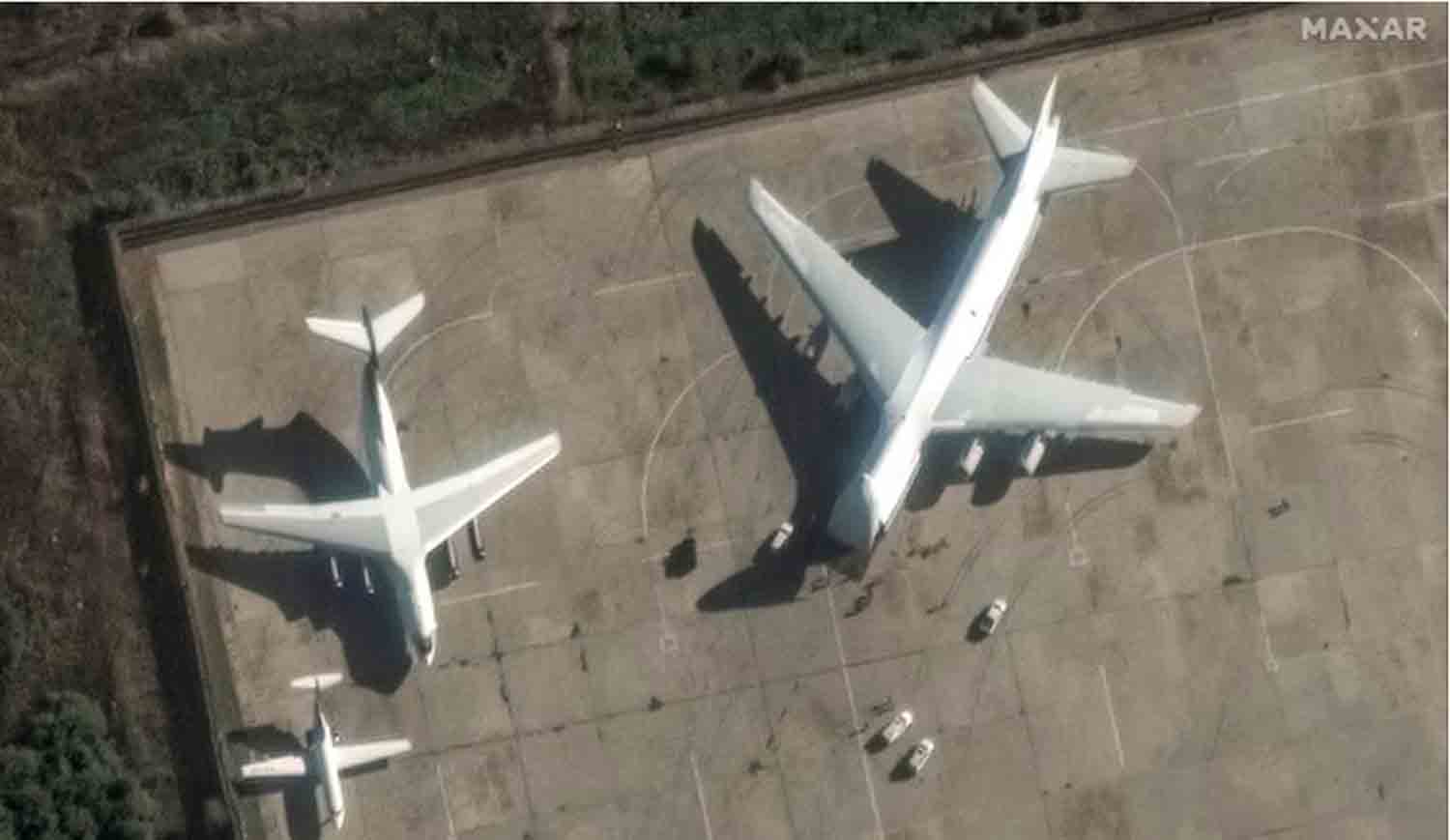Reports started to emerge less than 24 hours after the ousting of Syrian leader Bashar al-Assad. A local Libyan news outlet featured a headline on Monday, December 9, stating, “Several Assad regime officials arrive in Libya’s Benghazi,” just a day after rebels entered Damascus and discovered that the Syrian president had fled.
While Assad was reportedly taken to Moscow, Libyan news sources indicated that “a number of Syrian officials” loyal to him had arrived in the eastern Libyan city of Benghazi. Specific details about the fleeing officials were not disclosed, although personnel at Benghazi’s Benina airbase and international flight tracking services confirmed the arrival of the aircraft.
By the week’s end, there was a noticeable increase in air traffic between Syria and Libya. Multiple news reports indicated that Russia was withdrawing a significant portion of its military assets from Syria, particularly from the Khmeimim airbase in Latakia, and relocating them to Libya.
In light of Assad’s abrupt departure, Russia was working to manage its extensive military presence and personnel in Syria.
Kremlin spokesperson Dmitry Peskov acknowledged that Moscow was in communication with the rebels in Damascus. Journalists in Syria reported that fighters from the rebel group Hayat Tahrir al-Sham (HTS) were stationed around the outer perimeter of Russian military installations, with access to high-security areas restricted to outsiders.
More than a week following the ousting of Assad, a significant development occurred as the Syria-Libya maritime traffic began to increase.
According to reports from US news outlets, Russia has initiated the movement of naval assets from the Syrian port city of Tartus to Libya. A US defense official, who wished to remain anonymous, informed CNN this week that “Moscow has intensified its pressure on Libyan National Army leader Khalifa Haftar to solidify Russia’s claim to a port in Benghazi.”
The warning regarding the Libyan port felt reminiscent of past events.
Moscow’s efforts to gain naval access to eastern Libya, an area under the control of the powerful Haftar, have raised alarms among officials in Western capitals in recent years. With Libya destabilized and fragmented due to over a decade of conflict, it has become a strategic entry point for Russia into Africa.
However, despite Western apprehensions regarding Russia’s expanding influence in Libya and the adjacent Sahel region, these concerns have not led to any effective countermeasures on the ground. Consequently, the alerts from unnamed US officials regarding Russia’s naval intentions in Libya continue to periodically capture headlines in US media.
The abrupt fall of the Assad regime in Syria has intensified the geopolitical competition, creating ripples across the Mediterranean Sea, a crucial maritime corridor linking the Middle East, Europe, and Africa.
All about the naval base
Russia maintains a vital naval facility in the Syrian port city of Tartus, which accommodates elements of the Black Sea Fleet and serves as Moscow’s sole repair and replenishment station in the Mediterranean.
Originally established by the Soviet Union in the 1970s, the Tartus naval base has been expanded and modernized by Russia following the 2011 anti-Assad uprising, during which President Vladimir Putin employed military force to support his Syrian ally.
In January 2017, Russia secured a significant advantage by signing a 49-year lease with Syria for the Tartus naval base, which was granted at no cost and conferred sovereignty to Moscow. This agreement includes provisions for automatic extensions in 25-year increments unless either party raises objections.
Currently, the HTS-led rebels in Syria have permitted Russia to withdraw some of its military resources; however, the stability of Moscow’s long-term naval presence in the Mediterranean remains uncertain.
“We have yet to determine the future of the Russian presence in Syria. Clearly, they are in a weaker position now that their key ally has been removed. However, the primary objective of Russian foreign policy in Syria was not solely Assad, but rather the military bases that facilitated their influence in the Mediterranean. This situation is still under negotiation, and I believe Libya plays a crucial role in this strategy,” stated Emad Badi, a nonresident senior fellow at the Atlantic Council in Washington, DC.
With the downfall of Assad, attention has shifted to Libya’s extensive 1,700-kilometer Mediterranean coastline, particularly the eastern region controlled by Haftar’s military coalition.
“The Russians are increasingly reliant on Libya, which enhances Haftar’s negotiating power. He has a history of leveraging relationships between countries, and this situation will only bolster his position,” remarked Tarek Megerisi, a senior policy fellow at the European Council on Foreign Relations.
Fathers, Sons, and Lessons in Kleptocracy
Throughout a career filled with intrigue in the military, Haftar has navigated shifting allegiances, collaborated with competing factions, and skillfully preserved his own safety while accumulating significant wealth.
Known as “the strongman of Cyrenaica” or eastern Libya, the 81-year-old warlord began his military journey in Muammar Gaddafi’s forces before defecting to the United States, where he resided for two decades, obtained US citizenship, and earned titles such as “America’s man.”
In recent years, however, Haftar has adeptly rebranded himself as “Russia’s man,” following a strategy similar to that of his Syrian counterpart, Assad.
Like Assad prior to his removal, Haftar maintains his grip on power through strong familial connections. In the case of the octogenarian Libyan warlord, his sons serve as his key lieutenants, holding influential positions and high military ranks in eastern Libya. The most notable among them, Saddam Haftar, is widely believed to be the favored heir of the “Clan Haftar.”
Discover more from Defence Talks | Defense News Hub, Military Updates, Security Insights
Subscribe to get the latest posts sent to your email.





